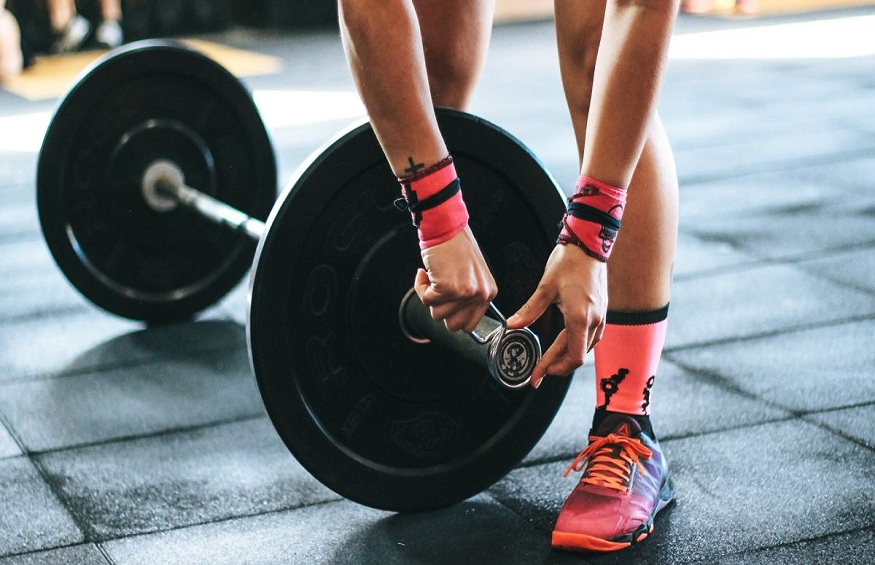A weight plate is a flat, heavy object, usually made of cast iron, used in combination with barbells or dumbbells to produce a barbell with a desired total weight for physical exercise.
There are two general categories: “Standard” plates, which have a center hole of approximately one inch (25 mm), and “Olympic” plates, intended to fit into the two-inch (50 mm) sleeves of Olympic bars. Standard plates are usually combined with adjustable dumbbells and Olympic plates with full-size dumbbells, although both standard and Olympic dumbbells are available.
Weight plates may incorporate holes for ease of transport (called “grip plates”) or be solid discs (especially those used for competition). Non-competition plates usually have varying diameters and widths, such as those on the adjustable dumbbells at right. The heavier ones are generally more prominent in diameter, thickness, or both. Weight plates are usually round, although 12-sided and other polygonal varieties exist. Most plates are coated with enameled or hammered paint to resist corrosion; more expensive types may be coated with chrome, rubber, or plastic.
The union of bars, discs, and collars or blockers (known as an Olympic set) will make your home gym unbeatable building strength and muscle mass method.
The discs inserted into the bar can be of different weights and made of other materials, although they are usually made of metal or rubber. They have a central hole of about 50 mm in diameter and are fastened to the Olympic bar with latches or butterflies.
All iron plates are “cast.” An impression in the shape of the weight plate is made in wet sand, and cast iron is poured into the cavity. Several factors influence the quality of the final product: the fineness of the sand; the cleanliness of the sand between pours; the control of the moisture of the sand; the grade and purity of the iron; the temperature control of the cast iron; the length of time the casting is left in the mold as the longer, the better.
Most manufacturers claim that the accuracy is within +/- 2% of the declared weight. For a plate weight of 45 pounds, this means a range of 44.1 to 45.9 pounds. This is acceptable for non-calibrated Olympic plates.
If you were to load three 45’s on each side of the bar, one side might weigh 132.3 pounds and the other 137.7 pounds – a difference of 5.4 pounds or 3%.
Almost all companies use too much paint. This causes the paint to chip almost immediately. And if the bottom surface is rusted, the paint will flake off. For best results, the plate should first be sandblasted. Then, immediately after sandblasting, a high-strength paint, such as polyester base paint. The painted plate should be baked for at least one hour and then cool completely before packing. If the corners are cut, you will have an ugly plate for club members.
Before purchasing weight discs, you will want to consider a few factors such as weight and size, barbell compatibility, material, training location, and opening diameter. If you intend to have a safe workout, there’s no place for plates that don’t weigh what they say; don’t fit the bar properly, or have surface irregularities, heavy grind marks, or flaking paint. On the other hand, when you have quality Olympic plates on your exercise floor, users will see, feel, and appreciate the difference.
